Well-Being & Ecology _|_ Issue 23, 2023
The Grandeur of the Night Sky
Dr Hannah Dalgleish invites us to rekindle our ancient relationship with the night at a time when light pollution is becoming a global disruption
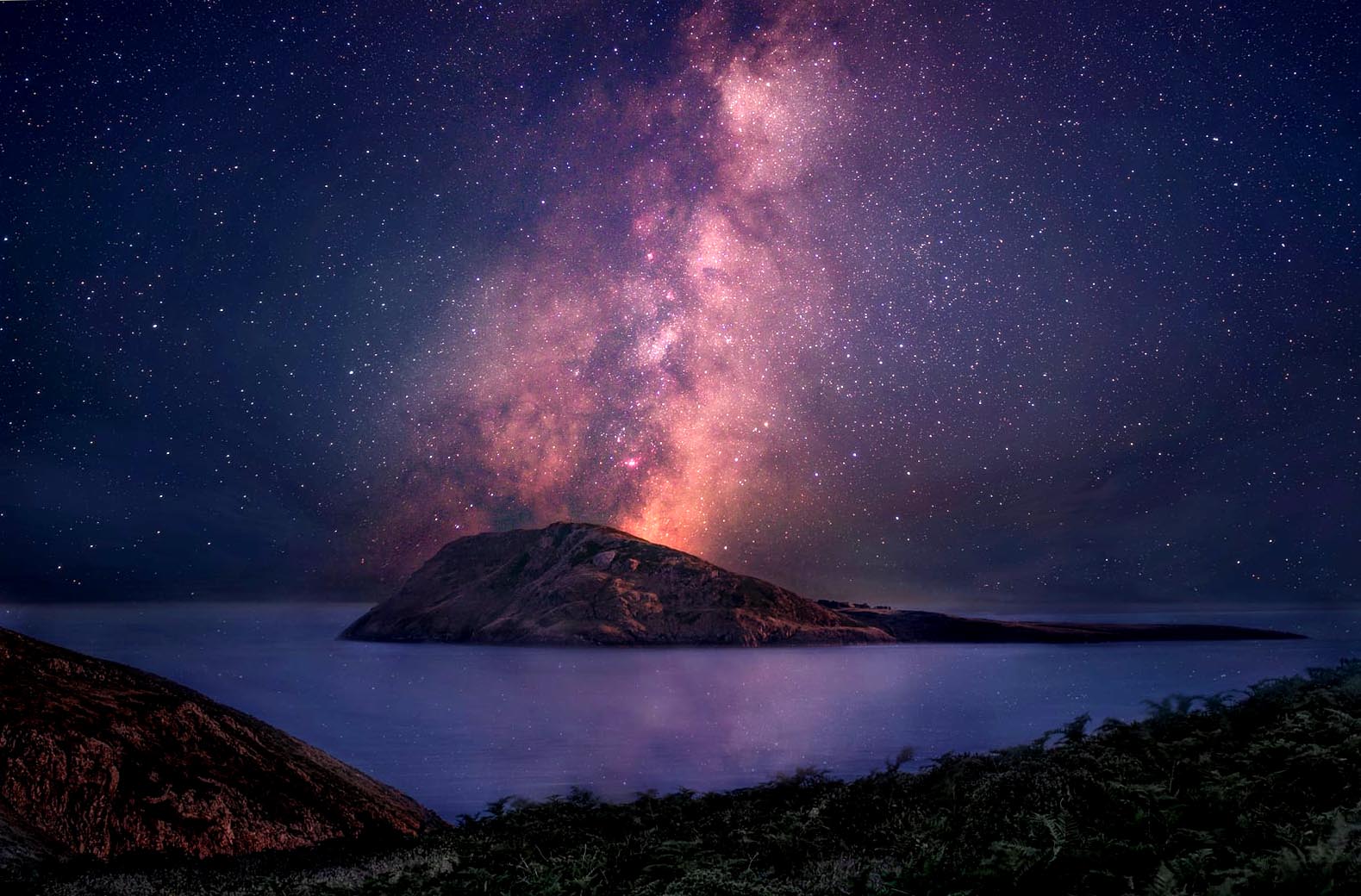
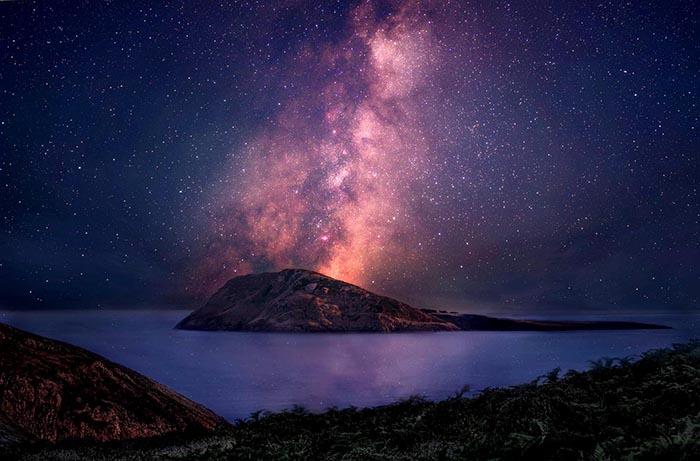
The Grandeur of the Night Sky
Hannah Dalgleish invites us to rekindle our ancient relationship with the night at a time when light pollution is becoming a global disruption
Light pollution is increasingly recognised as a significant problem in the contemporary world. Not only does the lighting up of cities and streets absorb enormous amounts of energy; it also disrupts the natural functioning of plants, animals and insects – and indeed, human beings. In this article, astrophysicist Hannah Dalgleish reminds us of the spiritual and imaginative value of darkness and the contemplation of the stars, which has brought us inspiration and comfort throughout human history. Hannah has been working as a advisor on dark sky policy in the UK, Namibia, Ireland and Germany, and she urges us to find ways of reconnecting with this ancient knowledge of our ancestors.
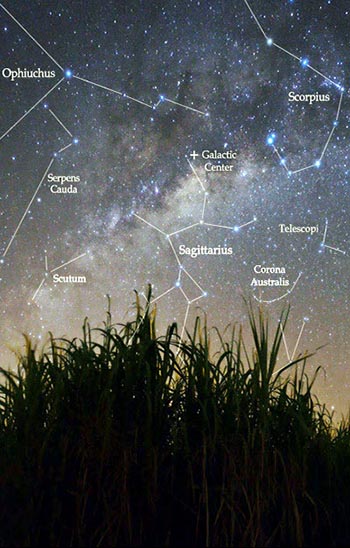 The deterioration of the night has gone by largely unnoticed. Despite global efforts to rewild and reconnect with nature, the emphasis tends to be on restoring the environment from a day-centric perspective while neglecting the nurturing of the night.
The deterioration of the night has gone by largely unnoticed. Despite global efforts to rewild and reconnect with nature, the emphasis tends to be on restoring the environment from a day-centric perspective while neglecting the nurturing of the night.
Living things have evolved over millennia according to the diurnal rhythms of night and day, but we have disrupted this age-old balance by lighting up the night. In the places where night-time lights have proliferated — around a fifth of the world’s land surface, excluding Antarctica — species display an array of altered behaviours. Electric lighting causes trees to bud earlier and lose their leaves later;[1] reduces nocturnal pollinator visits by more than 60%;[2] throws millions of migrating birds off-course;[3] limits the movements of hedgehogs;[4] destroys bat habitats;[5] prevents coral from spawning;[6] and so much more. Christopher Kyba, a physicist at the Ruhr University Bochum, notes that,
The introduction of artificial light probably represents the most drastic change human beings have made to their environment. Near cities, cloudy skies are now hundreds, or even thousands of times brighter than they were 200 years ago. We are only beginning to learn what a drastic effect this has had on nocturnal ecology.[7]
For humans, increased exposure to artificial light at night suppresses the secretion of melatonin. The ‘hormone of darkness’ is important for regulating sleep and stimulating the immune system, and its suppression leads to an increased risk of multiple depressive disorders. Using data taken by the Suomi National Polar-orbiting Partnership satellite in 2014, a group of scientists created an atlas of artificial night sky brightness. They found that more than 80% of the world’s population, including 99% in the USA and Europe, are living under light-polluted skies. The situation is so bad that the Milky Way is now hidden from more than one-third of humanity.[8] But almost a decade later we know that things have grown far worse; according to Kyba’s most recent research, the brightness of the night sky is now doubling every eight years.[9]
 The deterioration of the night has gone by largely unnoticed. Despite global efforts to rewild and reconnect with nature, the emphasis tends to be on restoring the environment from a day-centric perspective while neglecting the nurturing of the night.
The deterioration of the night has gone by largely unnoticed. Despite global efforts to rewild and reconnect with nature, the emphasis tends to be on restoring the environment from a day-centric perspective while neglecting the nurturing of the night.
Living things have evolved over millennia according to the diurnal rhythms of night and day, but we have disrupted this age-old balance by lighting up the night. In the places where night-time lights have proliferated — around a fifth of the world’s land surface, excluding Antarctica — species display an array of altered behaviours. Electric lighting causes trees to bud earlier and lose their leaves later;[1] reduces nocturnal pollinator visits by more than 60%;[2] throws millions of migrating birds off-course;[3] limits the movements of hedgehogs;[4] destroys bat habitats;[5] prevents coral from spawning;[6] and so much more. Christopher Kyba, a physicist at the Ruhr University Bochum, notes that,
The introduction of artificial light probably represents the most drastic change human beings have made to their environment. Near cities, cloudy skies are now hundreds, or even thousands of times brighter than they were 200 years ago. We are only beginning to learn what a drastic effect this has had on nocturnal ecology.[7]
For humans, increased exposure to artificial light at night suppresses the secretion of melatonin. The ‘hormone of darkness’ is important for regulating sleep and stimulating the immune system, and its suppression leads to an increased risk of multiple depressive disorders. Using data taken by the Suomi National Polar-orbiting Partnership satellite in 2014, a group of scientists created an atlas of artificial night sky brightness. They found that more than 80% of the world’s population, including 99% in the USA and Europe, are now living under light-polluted skies. The situation is so bad that the Milky Way is now hidden from more than one-third of humanity.[8] But almost a decade later we know that things have grown far worse; according to Kyba’s most recent research, the brightness of the night sky is now doubling every eight years.[9]

Starry Night over the Rhône by Vincent van Gogh (1888), now in the Musée d’Orsay, Paris. Image: Wikimedia Commons
The Contemplation of the Stars
.
As evidence around the ecological and physiological harms of light pollution continues to grow, it is equally important to give consideration to the night in spiritual and cultural contexts, and reflect on a more holistic view of the relationship between humans and darkness. Before the age of artificial light, one could easily gaze upon the stars and contemplate their existence in the unfathomable universe. To Walt Whitman, the night offered a sense of hope and comfort. When contemplating on the profound questions of life and death, he wrote:
In silence, of a fine night, such questions are answer’d to the soul, the best answers that can be given. With me, too, when depress’d by some specially sad event, or tearing problem, I wait till I go out under the stars for the last voiceless satisfaction.[10]
Mary Oliver, too, wrote of the profound experience of spending the night under the stars in her poem Sleeping In The Forest:
I thought the earth remembered me, she
took me back so tenderly, arranging
her dark skirts, her pockets
full of lichens and seeds. I slept
as never before, a stone
on the riverbed, nothing
between me and the white fire of the stars
but my thoughts, and they floated
light as moths among the branches
of the perfect trees. All night
I heard the small kingdoms breathing
around me, the insects, and the birds
who do their work in the darkness. All night
I rose and fell, as if in water, grappling
with a luminous doom. By morning
I had vanished at least a dozen times
into something better.
The night has always held a special place in human spirituality, associated with the mystery of the unknown and the search for self-knowledge. Vincent van Gogh was deeply fond of it and referred to the cosmic bodies and their eternal nature in many of his letters, such as one to his brother, Theo; ‘the sight of the stars always makes me dream’.[11] In the famous Persian poem, Layla and Majnun, a tragic story about unrequited love, Majnun yearns for Layla. Her name means night in Arabic, and thus, the night symbolises the object of love. Majnun’s longing draws him into the wilderness and into uncharted territory; his love for her, for Knowledge, is never-ending.
For many ancient cultures, celestial objects and the darkness itself were revered as sources of power and wisdom, and people had a deep respect for the natural cycles of day and night. People found stories within the arrangements of celestial bodies, providing a way for them to connect and communicate with ancestors, spirits and deities. The darkness also creates a space for people to quieten their minds, and in some religions people go in search of the dark. In Tibetan Buddhism and Bön, dark retreats are an advanced spiritual practice involving extended periods of time, from days to months, spent in complete darkness. These dark environments are used as a tool to induce visions and prepare for the bardo, the liminal state between death and rebirth.

As with many other nocturnal animals, bats are significantly affected by light pollution, especially street lighting. Photograph: BirdHunter591/istock
Fear and Sadness
.
Of course, as shown throughout history, darkness is more commonly perceived in a negative way and often conjures feelings of fear. Being afraid of the dark could initially have been a primal instinct, instilled to prevent humans from wandering off at night and becoming the meal of a predator. Then, as the risk of being eaten abated, people turned to new night-time threats, like the supernatural realm filled with evil spirits and demons. There are religious connotations too, as Tim Edensor, a professor of sociocultural geography at the Manchester Metropolitan University, describes,
We persist in referring to the ‘dark side’ and the ‘forces of darkness’ to connote the devilish, qualities that contrast with the advent of light cast by God out of preceding darkness, Christian allusions that remain deeply embedded in Western thought and feeling.[12]
Other night-related fears revolved around miasma, the Greek name for pollution. The night was thought to be a vehicle for miasma, a contagious and poisonous mist, spreading illness and sinful behaviour. André du Laurens, a mediaeval French physician, believed that melancholic people suffered from ‘having in their braine a continuall night’, turning them into ‘a savadge creature, haunting the shadowed places, suspicious, solitarie, enemie to the Sunne’.[13] In the 19th century, doctors believed that miasma was responsible for transmitting cholera through the night air, and prescribed people to stay inside after dark (to no avail). I believe that the night continues to be misunderstood to this day; for example, many people assume that light deters crime and increases safety, but evidence so far suggests that this is not necessarily the case.[14]
In my own life, I feel very fortunate to have encountered dark nature from a young age. As a child, I spent many nights at a remote retreat centre in the Scottish Borders, Chisholme House, often venturing out into natural nightscapes without a torch and making good use of my scotopic vision. The night was an adventure to be embarked upon; I never felt afraid, although perhaps this was because I was in the company of friends. Since then I have visited countless other dark sky oases all over the world — often in faraway and high-up places, from Mauna Kea in Hawai’i to the Khomas Highlands in Namibia. The hours would fly by as I lay on the cold, hard ground, tirelessly absorbing the vivid splendour of the Milky Way.
Now, when I find myself immersed under a dark sky I feel sadness as much as I feel joy. The Milky Way should not be a view reserved only for those privileged enough to travel; everyone should be able to bathe in its light and experience the awe and wonder it instills. But also, the vista is rapidly changing — thousands of satellites have begun to pollute the sky from low Earth orbit. Before long the quantities will be so numerous that the view will change altogether, wiping away any last remnants of the common heritage we once shared with our ancestors.
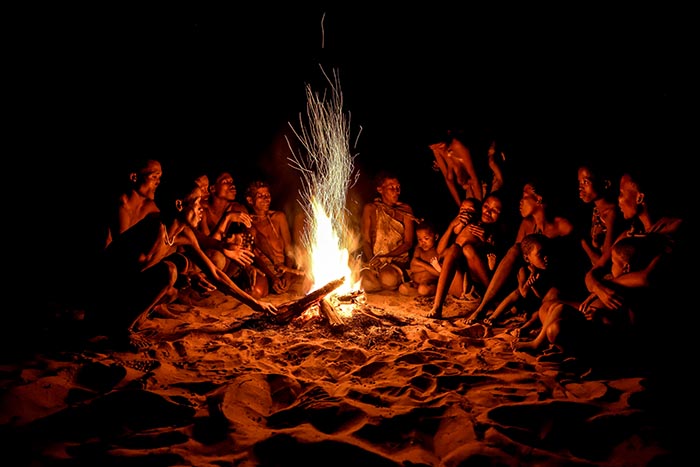
Firelight
.
Not all anthropogenic light is bad, and I am certainly not advocating the banishment of it altogether. With the advent of fire more than a million years ago came warmth, safety, protection, nourishment, and storytelling. Polly Wiessner, a professor of anthropology at the University of Utah, has demonstrated how the introduction of firelight created new types of social interaction. Studying the conversations of the Ju/’hoan (!Kung) Bushmen of southern Africa, she found that night activities around the fire evoked people’s imagination and generated trust and cooperation through singing, dancing, ceremonies, and the sharing of stories. These night-time rituals and traditions strengthened social bonds and reinforced cultural identity, creating a sense of community and belonging.[15]
Wiessner considers how the invasion of electric light today is ‘turning hours of darkness into economically productive time and overriding social time and story time’. When the day abruptly ends ‘with the flip of a switch’ we are neglecting to take ‘the time to revisit, explore, ponder, and repair relationships, or let the issues of the day fade with the embers’.[15]
I was recently exposed to the beauty of fire and its essential attributes when Storm Arwen hit in 2021 – I was at Chisholme House when we lost power for four days and nights. With the absence of electricity and only the fire to warm us and candlelight to guide us, each evening we conversed and told each other stories. I became completely in tune with my circadian rhythm, feeling tired earlier than usual. When the power suddenly returned, so did every light in the building. We were completely blinded by this brutal and unwarranted intrusion! The magic borne by the storm now seems like a long lost memory, replaced by feelings of nostalgia.
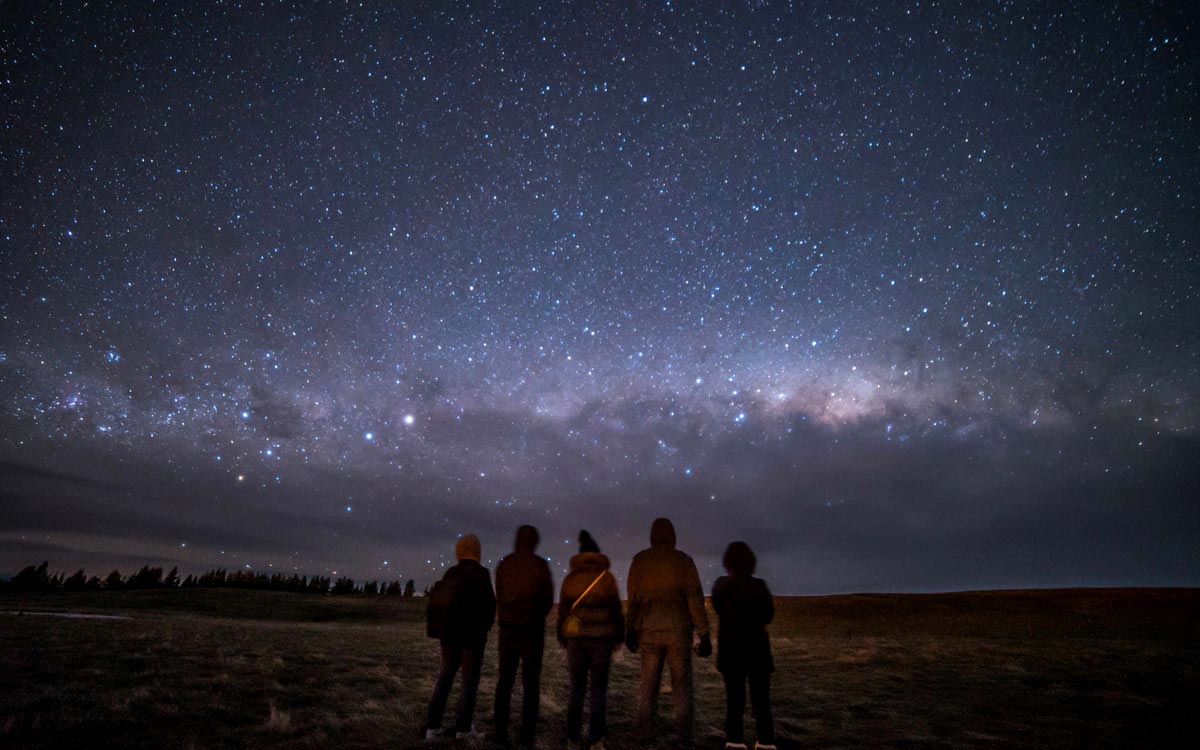
The Aoraki Mackenzie International Dark Sky Reserve in New Zealand. At 4300 sqkm, this is the world’s largest international dark sky park. Photograph: https://www.highcountrylodge.co.nz/international-dark-sky-reserve/.
Move your computer mouse over the image in order to enlarge
Reconnecting with the Night
.
So where do we go from here? In my work, as an astrophysicist with a special interest in dark skies, I have brought together other nyctophiles to try and build momentum and cultivate ideas for how, and why, we should safeguard the night. Last year I organised a Dark Sky meeting at the University of Oxford to facilitate new networks. Practitioners, lighting designers, astronomers, ecologists, social scientists and humanities scholars came together to exchange and consolidate knowledge, and think about how we can motivate societal and political change.[16] In my own time I am a dark sky advocate, and was recently successful in influencing the House of Lords Science and Technology Committee to launch an inquiry on the effects of artificial light on human health.[17]
There are also other organisations working zealously to protect the night sky, like the International Dark-Sky Association [/] founded in 1988. One of their intitiatives has been to establish International Dark Sky Places where the night sky is preserved and protected and can be seen in all its glory. These sites are included in a list of more than 300 dark sky areas around the world maintained by the International Union for Conservation of Nature [/]. For those of you in the UK looking to get involved, Go Stargazing [/] offers a comprehensive list of stargazing events as well as an interactive map with some of the UK’s darkest locations, and CPRE [/], the countryside charity, is always looking for more people to take part in its star count in February each year.
Unless we pause to question our use of excessive light at night, things will undoubtedly grow worse: the sky will continue to brighten exponentially, lit up from below and above. Children growing up in cities already have no idea what it looks like to see a sky all aglow with stars, denying them a source of inspiration once shared by countless artists and scientists before them. If we are to embrace nature in all its forms, we must learn to love and value the night as much as the day, lest we forget and erase the dark altogether. And as Martin Luther King, Jr. famously said, in his final speech before his assassination: ‘Only when it is dark enough can you see the stars’.[18]
And so I invite you to cultivate a more positive relationship with the night. I asked ChatGPT how one might go about this, and it suggested four things: (1) to spend time outside at night, perhaps by going on a night walk or sitting by a campfire; (2) to engage in meditation, prayer, or other spiritual practices at night; (3) to minimise interactions with electronic devices by turning them off at night and using dimmer lighting; (4) to reconnect with cultural traditions, research the night activities of your heritage and explore ways to incorporate them.
I think I might actually agree.
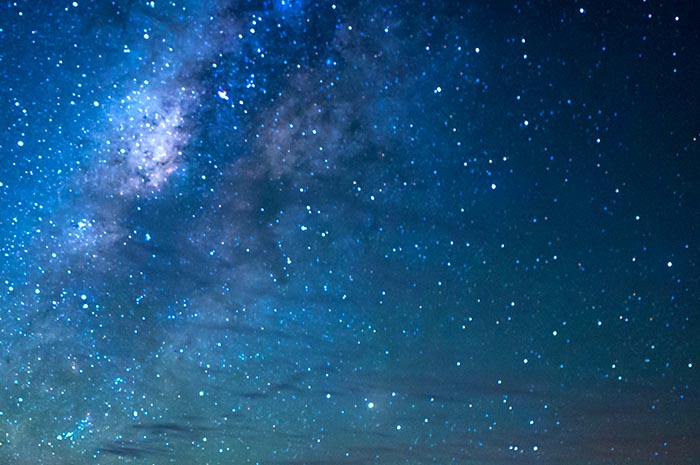
Milky Way over the volcano at Mauna Kea, Hawaii. Photograph: JTSorrell/iStock
Walt Whitman
On the Beach at Night Alone
On the beach at night alone,
As the old mother sways her to and fro singing her husky song,
As I watch the bright stars shining, I think a thought of the clef of the universes and of the future.
A vast similitude interlocks all,
All spheres, grown, ungrown, small, large, suns, moons, planets,
All distances of place however wide,
All distances of time, all inanimate forms,
All souls, all living bodies though they be ever so different, or in different worlds,
All gaseous, watery, vegetable, mineral processes, the fishes, the brutes,
All nations, colors, barbarisms, civilizations, languages,
All identities that have existed or may exist on this globe, or any globe,
All lives and deaths, all of the past, present, future,
This vast similitude spans them, and always has spann’d,
And shall forever span them and compactly hold and enclose them.
Acknowledgements
.
This article is dedicated to Bob Mizon MBE, a profilic dark sky advocate who passed away on the 19th April 2023. I would also like to acknowledge Sheerah Bloor, Aaron Cass, and ChatGPT who helped with some of the ideas presented in this article.
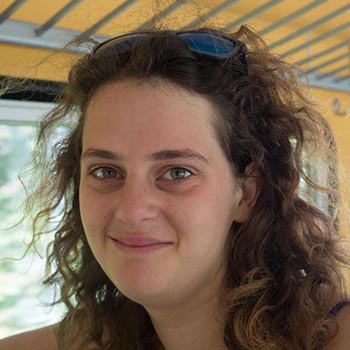
Hannah Dalgleish is a researcher, communicator, and engagement professional working at the intersection between science and society. She finished her PhD in Astrophysics from Liverpool John Moores University in 2020, and since has spent time in Namibia working on the use of astronomy as a means for sustainable development. She now spends her time focused on policy engagement. In 2022 she was an Oxford Policy Engagement Fellow working on exchange knowledge with policymakers on the topic of light pollution. Most recently she was a Green Talents Fellow working on ‘rewilding the night’ at the Sustainable AI Lab in Bonn
Image Sources (click to close)
Banner: The ancient pilgrimage island of Bardsey Island (Ynys Enlli) in Wales, which became an International Dark Sky Sanctuary in February 2023. Photograph: July 2021, courtesy of Rev. Richard Hainsworth andtherewaslight.co.uk
Inset: Night sky over Australia with the most prominent constellations marked. https://nasa.tumblr.com/post/150688852794/zodiac
Other Sources (click to open)
[1] J. BENNIE, ‘Ecological effects of artificial light at night on wild plants’ in Journal of Ecology 104: 611-620 (2016). Online: 10.1111/1365-2745.12551.
[2] E. KNOP et al., ‘Artificial light at night as a new threat to pollination’ in Nature548: 206–209 (2017). Online: 10.1038/nature23288.
[3] B.M. VAN DOREN et al., ‘High-intensity urban light installation dramatically alters nocturnal bird migration’ in PNAS 114: 11175-11180 (2017). Online: 10.1073/pnas.1708574114.
[4] A. BERGER et al.,’ Moving in the Dark—Evidence for an Influence of Artificial Light at Night on the Movement Behaviour of European Hedgehogs (Erinaceus europaeus)’ in Animals10: 1306 (2020). Online: 10.3390/ani10081306.
[5] T.M. STRAKA et al., ‘Tree Cover Mediates the Effect of Artificial Light on Urban Bats’ in Front. Ecol. Evol 7 (2019). Online: 10.3389/fevo.2019.00091.
[6] T. SHLESINGER & Y. LOYA, ‘Breakdown in spawning synchrony: A silent threat to coral persistence’ in Science 365: 1002-1007 (2019). Online: 10.1126/science.aax0110.
[7] See International Dark Skies Association website: https://www.darksky.org/light-pollution/wildlife/.
[8] F. FALCHI et al., ‘The new world atlas of artificial night sky brightness’ in Science Advances 2, e1600377 (2016). Online: 10.1126/sciadv.1600377.
[9] C.C.M. KYBA et al., ‘Citizen scientists report global rapid reductions in the visibility of stars from 2011 to 2022’ in Science 379: 265-268 (2023). Online: 10.1126/science.abq7781.
[10] WALT WHITMAN, “Death of Carlyle”, published in The Critic (1881), https://acdc.amherst.edu/view/asc:624208.
[11] VINCENT VAN GOGH, Letter to his brother, Theo (July 1888), https://vangoghletters.org/vg/letters/let638/letter.html#translation.
[12] T. EDENSOR, ‘Reconnecting with darkness: gloomy landscapes, lightless places’ in Social & Cultural Geography, 14:4, 446-465 (2013). Online: 10.1080/14649365.2013.790992.
[13] A.A. DU LAURENS, Discourse on the Preservation of the Sight: of Melancholike Diseases; of Rheums, and of Old Age, translator R. Surphlet (1599). (Oxford University Press, 1938).
[14] L. TOMPSON et al. ‘Absence of Street Lighting May Prevent Vehicle Crime, but Spatial and Temporal Displacement Remains a Concern’ in Journal of Quantitative Criminology (2022). Online: 10.1007/s10940-022-09539-8.
[15] P.W. WIESSNER, ‘Embers of society: Firelight talk among the Ju/’hoansi Bushmen’ in PNAS 111: 14027–14035 (2014). Online: 10.1073/pnas.1404212111.
[16] https://darkskytourism.com/meeting/.
[18] MARTIN LUTHER KING Jr, “I’ve Been to the Mountaintop” speech, Memphis, Tennessee, USA (1968).
Photograph:courtesy Rev. Richard Hainsworth
Move your computer mouse over the image in order to enlarge
FOLLOW AND LIKE US
——————————————
——————————————
——————————————
FOLLOW AND LIKE US
If you enjoyed reading this article
Please leave a comment below.
Please also consider making a donation to support the work of Beshara Magazine. The magazine relies entirely on voluntary support. Donations received through this website go towards editorial expenses, eg. image rights, travel expenses, and website maintenance and development costs.
READ MORE IN BESHARA MAGAZINE
Redescovering Our Earth Emotions
Environmental philosopher Glenn Albrecht talks about climate change, solastalgia and his inspiring vision for the future
A Thing of Beauty…
Jane Clark contemplates the view of Earth from the moon, first captured in the famous photograph ‘Earthrise’
Wisdom of Time and Transformation
Dr Alison Roberts explains the ancient alchemical knowledge of Egypt
The Field of Light
Bruce Munro’s new art installation at Uluru (Ayers Rock)
READERS’ COMMENTS

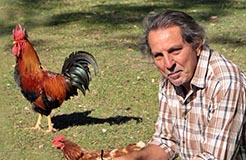
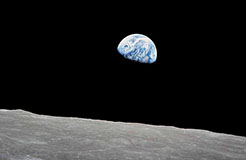


Let’s celebrate Nature in the mead room sometime with each having their say and you chairing the meeting.Thank you for a fine article.
There is no Milky way. Not true.
This is a beautiful and inspiring article. Thank you for taking the time to write this, and thank you also for offering practical advice at the end – so true, and simple and helpful.